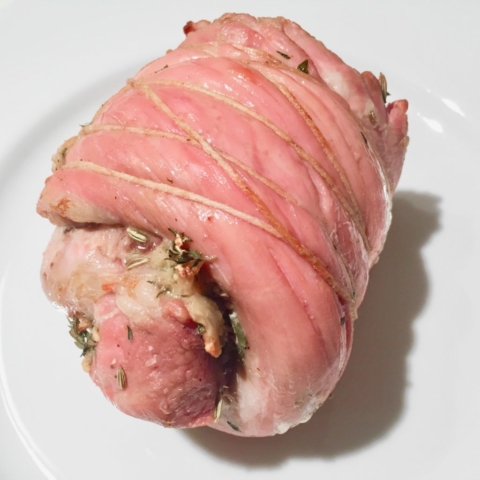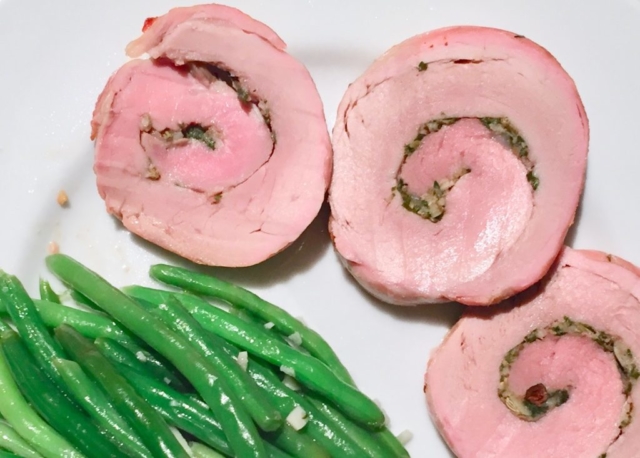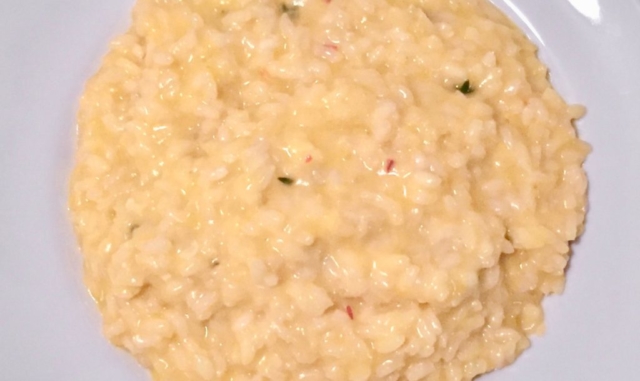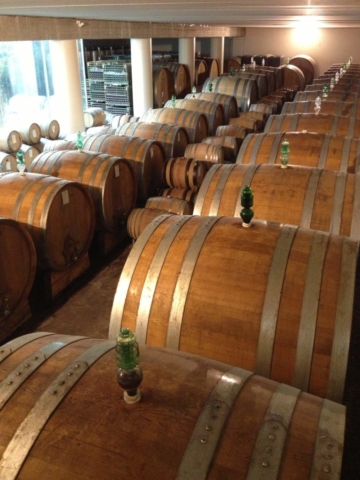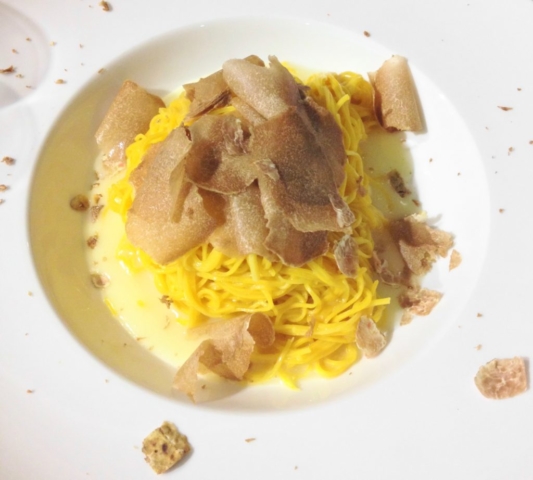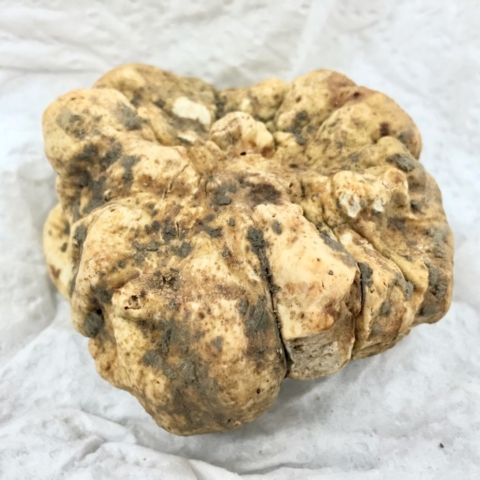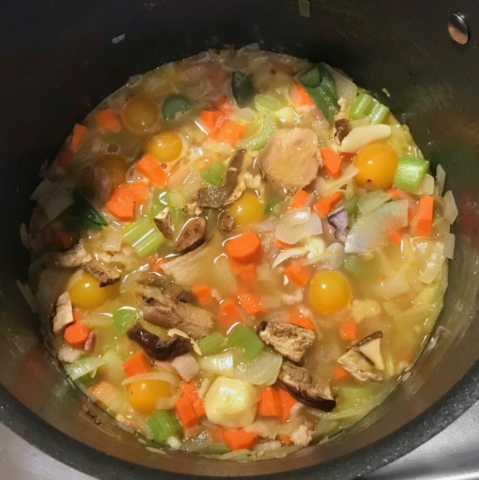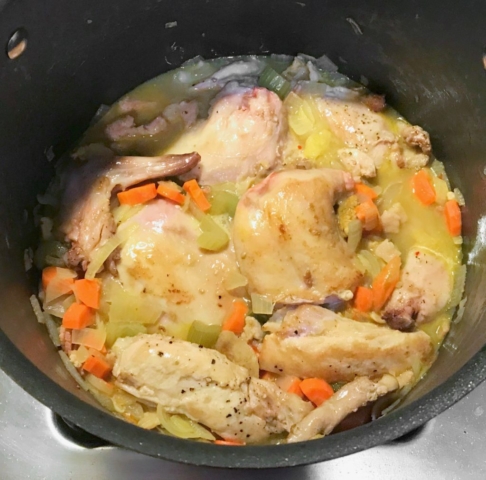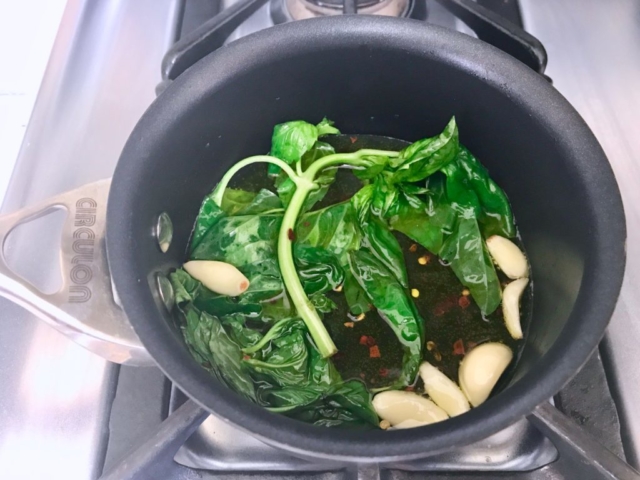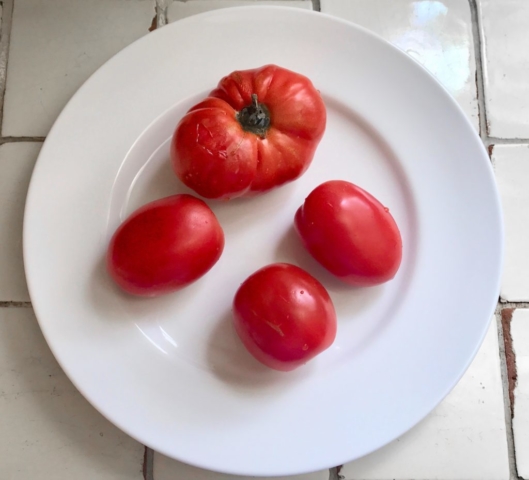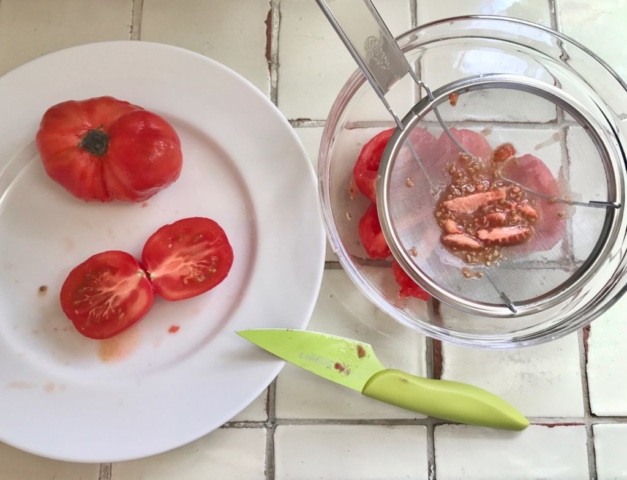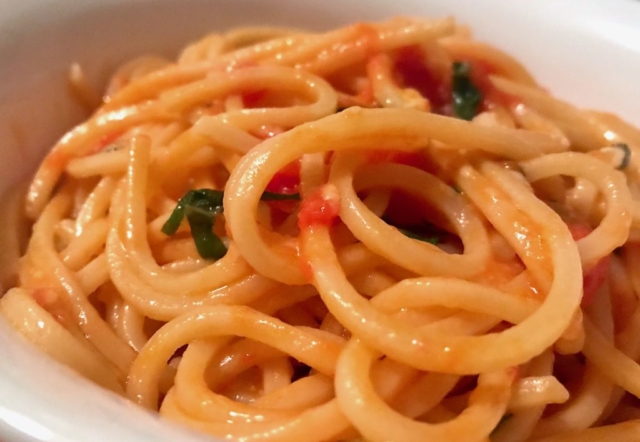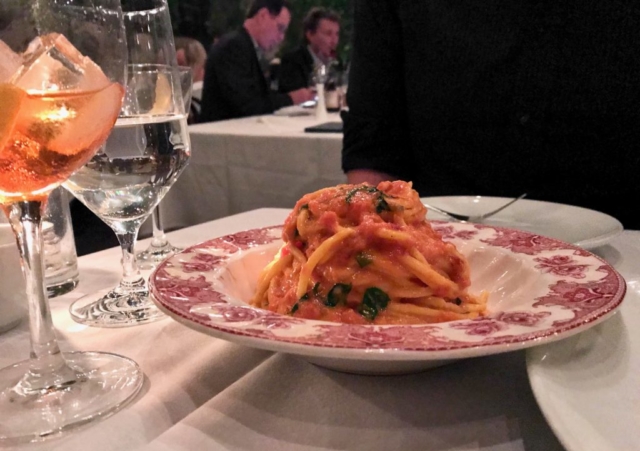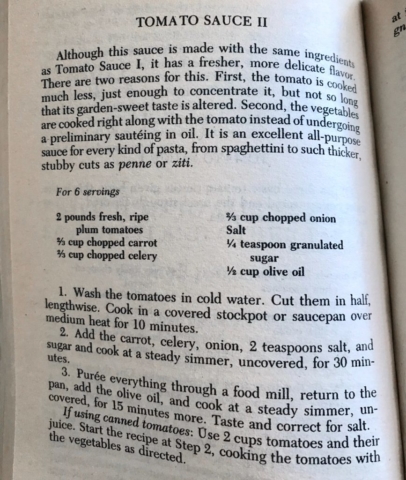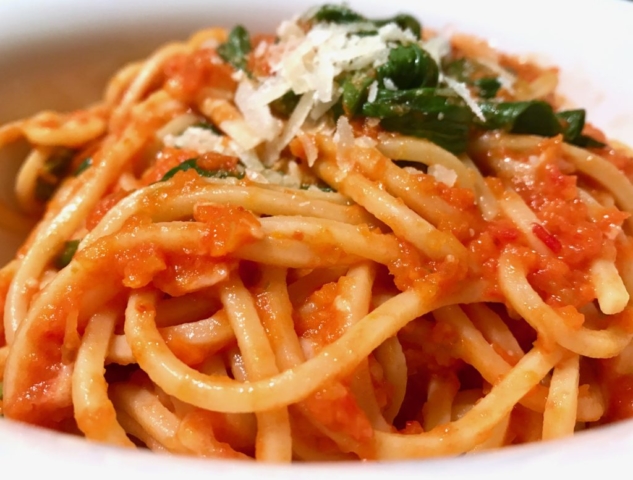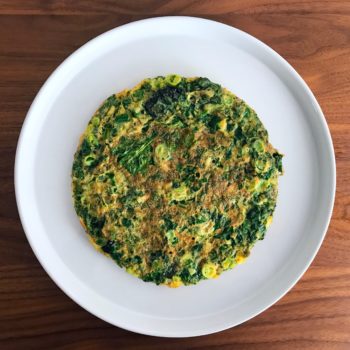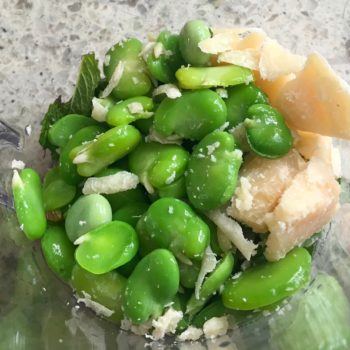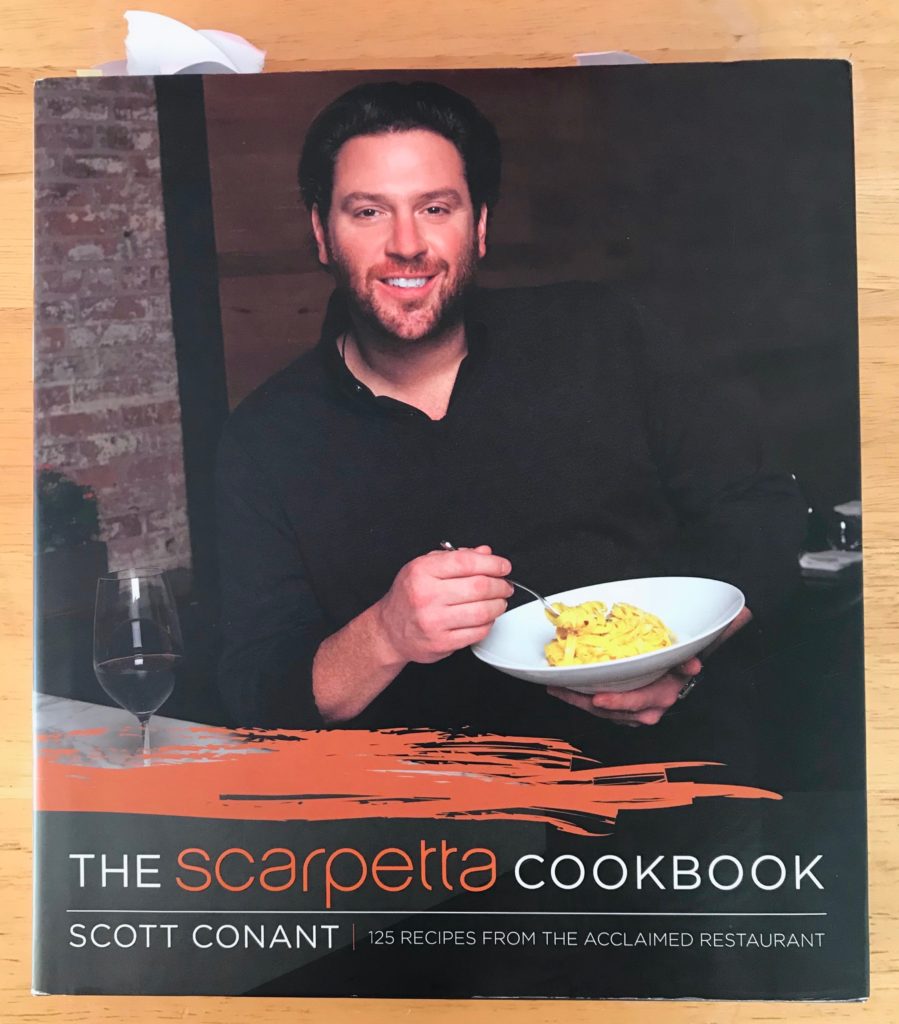
The Scarpetta Cookbook
Scott Conant
Photographs by Brent Herrig
2013
Purchased from the LA Times Festival of Books and signed to me personally by Chef Conant
Recipes cooked: Focaccia, carne crudo albese, Scarpetta tomato sauce, fresh spaghetti, black farfalle, black truffle risotto, rabbit ragù, celery root purée, sunchoke purée, Scarpetta’s roasted porchetta (seasoning only)
Recipes I want to cook: Stromboli, mascarpone butter, yellowtail crudo with chile and ginger oils, short ribs with farro and vegetable risotto, sweetbreads with pan-roasted fall vegetables and drunken prunes, asparagus soup with goat cheese dumplings, chestnut soup with short rib daube, short rib and bone marrow agnolotti with horseradish brown butter and herbed bread crumbs, rabbit with pan-roasted parsnips and herbed spaetzle, vanilla caramel budino with salted caramel sauce
Difficulty to make: Medium to hard, but the instructions are detailed and clear
Difficulty to source: Medium to hard
Surprise ingredients abound in The Scarpetta Cookbook
Chef Scott Conant is well known as the judge on Food Network’s “Chopped” who is revulsed by raw red onion, raises an auburn eyebrow at any contestant who dares present a pasta dish for his critique, and looks like the “reveal moment” in a prom makeover movie on the occasions when he dons a haircut, his glasses, and a tie. (People named him the sexiest chef of 2015 over Curtis Stone, Ari Taymor, and Michael Voltaggio.)
But if you’ve had the pleasure of eating at one of his Scarpetta restaurants stretching from Newport to Miami to the Vegas Strip, or else The Ponte in LA, Mora in Phoenix, or Fusco in Manhattan, or if you’ve ever had the pleasure of meeting him when he clearly has no time but stops and gives you five minutes anyway, you know him for him. You’re more apt to think of the smart restaurateur who hires meticulous cooks and gracious hosts to convey his food to thousands of guests a day, the passionate translator of authentic regional Italian food to the US, and the all-around nice guy. When I think of eating at Scarpetta and The Ponte, I’m reminded of a quote from another great New Yorker, Tina Fey: “In most cases being a good boss means hiring talented people and then getting out of their way.” I cannot write this piece without saying thanking Conant for doing so with Freddy Vargas, his executive chef in Los Angeles, who has kept us booking over and over and over again for our birthdays, anniversaries, and Thanksgivings. He’s so good.
Chef Scott Conant encouraged us to go to Alba, Italy at peak white truffle and Barolo harvest season
I am also endlessly grateful to Conant also for sharing his best recipes, but it was probably less difficult to divulge these secrets-worth-keeping knowing how difficult many are to make. Following instructions exactly, I’ve made the fresh pasta dough, the black farfalle dough, the Scarpetta tomato sauce, and the carne cruda albese, essentially steak tartare with truffles. The carne cruda did receive a slight upgrade to fresh Alba white truffle since it was for my husband’s and my anniversary; I actually have Conant to thank for strongly encouraging us to add a few days in Alba during truffle season to our Italian honeymoon at a food event. (We did and loved it!)
For the most part, I’ve strayed from the instructions, a lot, and everything still turns out beautifully. I’ve consulted the sunchoke purée for the cooking times and made the spiced butternut squash soup with subtractions, black truffle risotto with substitutions, and the roasted porchetta with shortcuts. The flavors and techniques are worth gleaning from his recipes. I was eager to recreate his porchetta after pigging out on it at Scarpetta’s perfect Thanksgiving buffet one year, but not to prepare the seven to eight pounds of pork belly the recipe rightly calls for. The spice and herb blends were totally unlike any porchetta recipe I’d seen, though, so for a typical weeknight dinner, I was thrilled to use his brine and herb rub on fatty heritage shoulder chops. It was brilliant.
Rabbit ragù
For the the rabbit ragù, I opted to use an organic chicken stock instead of making my own (and I actually used the rabbit carcass later to make stock for a soup recipe from his friend Alex Guarnaschelli’s cookbook). The pasta dish I made with the rabbit ragù one night was my husband’s favorite meal I’d cooked in months. The improvised soup I made the next night by adding corzetti pasta to the leftover mirepoix, rabbit meat, and stock was his second favorite. He called the flavor “delicate”; so does Conant. His is my only cookbook besides Joy of Cooking with a rabbit recipe, and there are actually two. Rabbits leave a tiny carbon paw-print, so uncomfortable though it might be (Thumper, Velveteen, Peter…), we should be eating more of it. Conant knows this.
Dishes I haven’t attempted, because I loved them at the restaurant and looked at the recipes and decided I’m content with the memories, include the sweetbreads with pan-roasted vegetables and drunken prunes, the short rib and bone marrow agnolotti, the fish crudos, and the vanilla caramel budino with salted caramel sauce (which was presented to me several birthdays ago like a trifle with soft, chewy cookie dough crumbles). The recipe for the sweetbreads, for example, calls for 26 ingredients—most of which I have in my refrigerator, pantry, and wine rack at any given time, but I’m not sure that everyone stocks fresh thyme, carrots, onions, shallots, garlic, pumpkin seeds, dry shiitake mushrooms, whole grain mustard, dry bay leaves, and red and white wine as I do. The real obstacle is that I’ve yet to find sweetbreads at any butcher counter in Los Angeles, even at the Asian markets, where I buy my rabbits, pork necks, and live crabs.
But there are many recipes that those without a lot of cooking experience can and should make, especially if they have a couple of junior sous-chefs who can help out. My mom and I sent hundreds of sheets of homemade pasta dough through her hand crank machine together from when I was a toddler until I left for college and eventually got my own, so I know what I’m looking for in a pasta dough consistency. I’m pleased to say that the recipes for fresh pasta dough that appear in The Scarpetta Cookbook required no adjustments to the amount of moisture on my part. None. My mom was also not too keen on making eggy pasta doughs, and these are, brilliantly so. They stretch and cut and chew like none other I’d ever made. The cuttlefish ink pasta dough would be especially fun for kids to help out with. No hand-crank machine? No problem. Many pastas are hand-cut or can be hand-cut.
And many of the recipes just aren’t that hard, especially the breads, meat dishes, and vegetable purées—these recipes call for mixers with hooks, ovens set to low temperatures, and food processors. There is a lot of jumping-around in the cookbook, as one component may come from a previous chapter and another from the last chapter of pantry staples, and there is not a table of contents with all recipes listed upfront, but as I’ve learned, this is what sticky-note bookmarks are for; my copy is full of them.
The Scarpetta spaghetti pomodoro at home, and at the Ponte
I hate to admit, though, that I ignored the bookmark on the Scarpetta tomato sauce for the last three years until Los Angeles lost its Scarpetta and with it, what I approvingly called its “twenty-four dollar spaghetti.” Conant’s tomato sauce is truly that: ripe tomatoes, peeled and de-seeded and cooked, with the addition of olive oil subtly infused with garlic, fresh basil, and chili flakes. A number of other Scarpetta sauces are built upon it. To make the twenty-four dollar spaghetti, cook the sauce further to concentrate the flavor, finish the pasta’s cooking process in it, and stir in grated Parmigiano-Reggiano, butter, and more basil. (The recipes for the sauce and spaghetti can be found online at Serious Eats, The Washington Post, Redbook, and elsewhere.)
I made the sauce in July in Los Angeles, a time and place that suits the fruit, sun-ripening roma tomatoes and one heirloom tomato in a kitchen window for four days until the skins darkened and started to pucker. The sauce was refreshing and juicy, though a bit thin, with the pronounced taste of fresh basil from the infusion. The resulting spaghetti dish became salty and fatty and complex from the imported Parmigiano-Reggiano, earthy Ferrarini Italian butter, and my grassy, spicy Zefiro Sicilian extra virgin olive finishing oil. My approximately ten dollar spaghetti was not as sweet as I remember the twenty-four dollar spaghetti tasting, so I felt compelled to try a couple of bites of spaghetti topped with a few granules of sugar; these were the best bites. (I think finishing it with really good, sweet butter, and not a small amount of it, is the best way to go.)
In comparing Scarpetta’s famous tomato sauce recipe to those of Marcella Hazan and Lidia Bastianich, Conant’s predecessors in bringing authentic Italian cuisine to America, I was surprised that Hazan kept raw tomatoes whole and put the sauce through a food processor, and Bastianich used canned San Marzano tomatoes, which are peeled but not de-seeded. Both recipes call for the Italian holy trinity, or soffritto, of carrot, celery, and onion, another departure. I decided to make Hazan’s and Bastianich’s and compare the three. Why not?
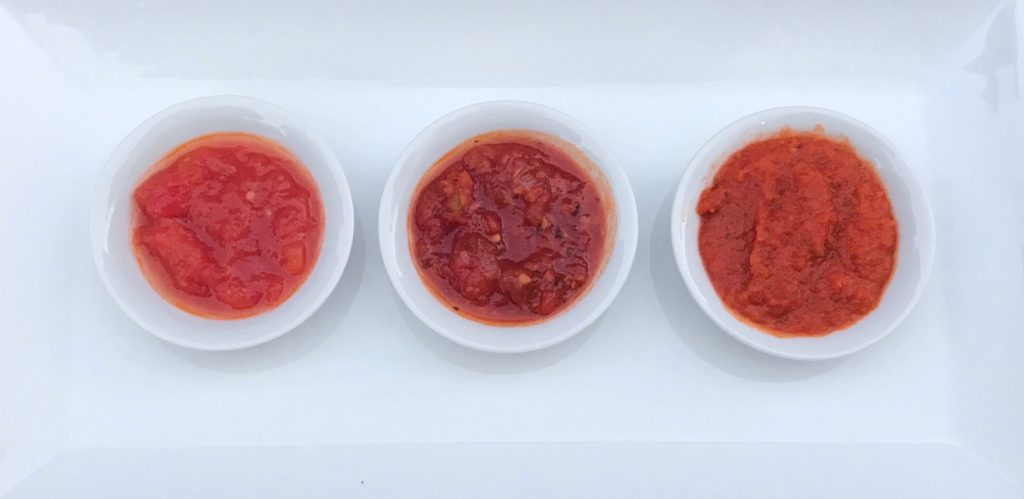
From left to right, Conant, Bastianich, Hazan
Bastianich’s was spicy and rich; regrettably, the herbs in the San Marzano tomatoes reminded me of the canisters of dried oregano in my mom’s pantry when I was a kid, which I used to sniff and shake generously over my homemade buttered pasta when I was home alone—a bit much. Bastianich’s also specifies for the vegetables to be finely chopped; if you need sauce in a hurry, reach for the jarred stuff. Hazan’s tomato sauce, though, with my lazily chopped vegetables and tomato skins intact and destined for a (gasp) food processor, was bright, sweet, and sublimely tomatoey. I expected to like it the least, given that it was a 45 year-old recipe going up against recipes developed twenty and forty years later, but I loved it.
Marcella Hazan’s tomato sauce II
When I had my Scarpetta, though, would I have suddenly foregone the experience of the courtyard view and light breezes, the server and sommelier who remembered me and my husband even when we hadn’t come in for a year, the complimentary bread basket with cheesy stromboli and chewy ciabattini, the opportunity to wear a sundress and spot celebrities, the ease and romance of it all—for the inexpensive version of the Scarpetta tomato sauce made at home, or a quicker tomato sauce that was as good, or anything other than my twenty-four dollar spaghetti?
My answer was no. As Conant writes in his introduction of his guests, “The spaghetti makes them very happy. Indeed, when I opened Scarpetta, it was with that one simple goal: making people happy. This very basic idea—that customers leave our restaurant happier than when they walked in—is my overriding mission.”
Since making the spaghetti at home last summer, I haven’t made it again. Instead, I celebrated my third anniversary at The Ponte, and the spaghetti was exactly as perfect as I remember it tasting at Scarpetta.
So order the spaghetti at the restaurants, and order the cookbook for everything else. The recipes are so endlessly rewarding and forgiving, so authentic and imaginative, that I think The Scarpetta Cookbook more than deserves its place next to The Classic Italian Cook Book
on our shelves.

